Themed collection 2D materials: molecular design and engineering perspectives

2D materials: molecular design and engineering perspectives
Guest Editors Deep Jariwala and Mark Hersam introduce this themed collection showcasing the latest research leveraging principles of surface, physical, and covalent chemistry to modify the properties of 2D materials and guide the understanding of charge and energy transfer across mixed-dimensional heterointerfaces to enable enhanced performance or distinct functionality in emerging applications.

Mol. Syst. Des. Eng., 2019,4, 469-470
https://doi.org/10.1039/C9ME90017A
Engineering of transition metal dichalcogenide-based 2D nanomaterials through doping for environmental applications
This article reviews potential environmental applications of two-dimensional (2D) transition metal dichalcogenides (TMDs) engineered through doping.
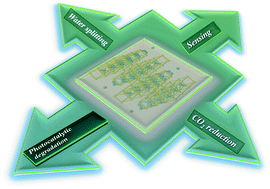
Mol. Syst. Des. Eng., 2019,4, 804-827
https://doi.org/10.1039/C8ME00116B
Unveiling the emergence of functional materials with STM: metal phthalocyanine on surface architectures
(a) Self-assembly (SA) of CuPc on the step edges of the Bi2Se3 surface, b) CuPc 1D chains in the SA, and c) HOMO–LUMO gap variation of CuPc.

Mol. Syst. Des. Eng., 2019,4, 471-483
https://doi.org/10.1039/C9ME00014C
Flexible and transparent graphene complementary logic gates
Flexible and transparent monolithic graphene transistors and complementary logic gates were fabricated using chemically doped graphene.
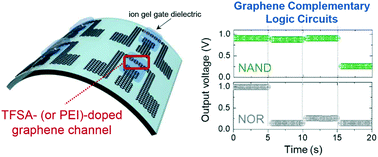
Mol. Syst. Des. Eng., 2019,4, 484-490
https://doi.org/10.1039/C8ME00100F
Covalent chemical functionalization of semiconducting layered chalcogenide nanosheets
The covalent functionalization of the surfaces of transition metal dichalcogenide and pnictogen chalcogenide materials is demonstrated using aryl diazonium chemistry.
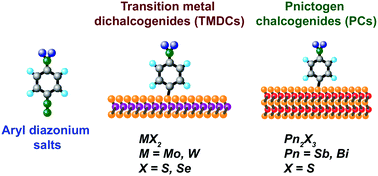
Mol. Syst. Des. Eng., 2019,4, 962-973
https://doi.org/10.1039/C9ME00045C
Charge transfer dynamics in conjugated polymer/MoS2 organic/2D heterojunctions
We demonstrate electron transfer from monolayer MoS2 to three different organic semiconducting conjugated polymers.
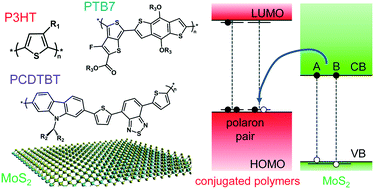
Mol. Syst. Des. Eng., 2019,4, 929-938
https://doi.org/10.1039/C9ME00019D
Persistent superconductivity in atomic layer-magnetic molecule van der Waals heterostructures: a comparative study
2D superconductor-magnetic molecule heterostructures are created and controlled through coordination chemistry.
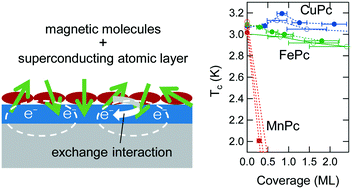
Mol. Syst. Des. Eng., 2019,4, 511-518
https://doi.org/10.1039/C9ME00017H
Charge-tunable graphene dispersions in water made with amphoteric pyrene derivatives
Pyrene derivatives with biomolecular functional groups (lysine and taurine) have been used to produce stable, concentrated and biocompatible graphene dispersions with amphoteric properties.
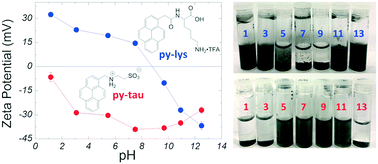
Mol. Syst. Des. Eng., 2019,4, 503-510
https://doi.org/10.1039/C9ME00024K
Semi-quantitative design of black phosphorous field-effect transistor sensors for heavy metal ion detection in aqueous media
A statistical thermodynamics model was developed to illuminate sensing mechanisms and guide design of field-effect transistor sensors using 2D nanomaterials.

Mol. Syst. Des. Eng., 2019,4, 491-502
https://doi.org/10.1039/C8ME00056E
About this collection
From MSDE
Guest Editors: Professor Deep Jariwala (University of Pennsylvania) and Professor Mark C. Hersam (Northwestern University)
Following the discovery of graphene, a number of two-dimensional (2D) materials have been isolated or synthesized resulting in a broad class of materials with a wide range of compositions and structures. As a result of their atomically thin nature, the physical properties of 2D materials are highly tunable by external physical stimuli as well as chemical interactions with the surrounding environment.
Thus far, the properties of 2D materials have been predominantly tuned via physical stimuli such as electric and magnetic fields or strain. The ability to tune or enhance the properties of 2D materials via chemical functionalization represents an emerging research direction with implications for a wide range of applications including electronic, optoelectronic, and sensing devices in addition to energy harvesting and storage technologies.
This collection of papers highlights molecular design and engineering perspectives for 2D materials.